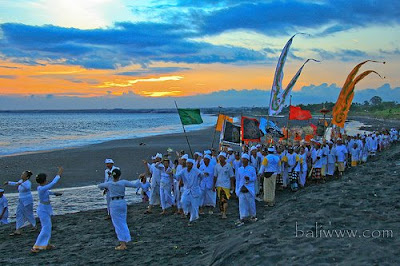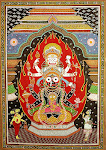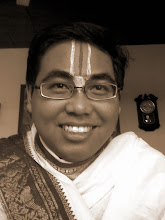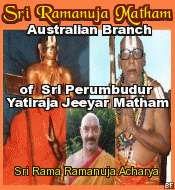
Finally on Amavashya day of the ninth Balinese month, thousands Hindus flocked to The Mother Temple for the Panca Bali. The sacrificial area has fully decorated. The priests arranged the offering of various kinds, including meat from certain animals. Two monsters, in the size of a car, made from vegetables, grains, and fruits guarding the entrance gate of the holy ground. Five Thrones of Divine Sun made from bamboo and palm trees presiding over the whole area, served as resting place for the invited Maha Devas, the Lords of five elements, five cardinal directions, and five powerful natural energies. We also had five pavilions for Brahmin high priests, in responsible for the five Maha Devas, and their offerings. All the offerings were arranged in a form of Mandala, symbolically represented the whole universe. Rice and grains of various colors were the most important part of the offerings. We could find a ten meters mountain of colourful rice cakes in various shape, once again formed a three dimensional Mandala. It has big Kurma (turtle) and Seshanaga as the base. On turtles back were many small statues of various living entities, from demons, vegetations, animals, ghosts, humans, heavenly nymphs, sages, demigods, to the great Mahadevas and Brahmas. Everything was made from rice flour.
The high priests began to initiate the elaborate ceremony by certain process called Srija-puja or Uttpati, thus installed the living force to all sacrificial offerings. Now the whole offerings spiritually increased, spread all over the world, unlimited as the universe. Magically the whole universe now contained in one spot, at the sacrificial arena. The high priests of so called Vaishnavite sect, believed as the guardian of the most secret formulas to subdued malignant energies, began to invoke the Maha Devas in their wrathful forms. The fiery Lords and their dangerous attendants of wild ghostly beings, pleased by tamasic offerings of meat, blood, and liquor. Then by the power of mantras and sounds of conches, drums, and bells the high priests subdued them and appeased their anger. The next step was responsibility of so called Buddhists high priests. They used many hand gestures (mudras) and two typical Vajrayana weapons, same as the ones used by Tibetan Lamas, the adamantine sceptre (vajra) and bell (ghanta). They guided further transformation of tamed powerful natural energies to more peaceful, divine, graceful forms. The mask dance, puppet show, traditional music concert, religious singing, and also other dance by groups of virgin boys and girls were performed to please the attending Devas. Now we came to the responsibility of the Shaivite high priests. They have to offer the essences of the purest offerings to please all graceful manifestations of the Devas and finally obtained their benedictions. This is the process of universal maintenance or Sthiti-puja. Finally, we came to conclusive stage. The whole universe was offered to the fire-like anger of wrathful emanations of the Presiding Devatas. By this offering they became pleased and peaceful. The malignant energies emanates from the Maha Devas, re-entered their Divine Sources. The whole sacrificial offering now has been burned to ashes. This was the time for Samhara or Pralina-puja. The Mandala brooked by mixed all colourful grains to form undifferentiated mound. They were solved by scraping them, directed to the centre. Now everything was already finished, no clear form was left. But the sacrificial offerings were stay in their subtle form. The powerful energies, reborn as a new, fresher and better universe. In one corner, some priests chanted a must correctly read verses from palm leaves book. This ritual was performed to beg apologized from all invoked Devatas if there’s any error along the observance of the sacred ceremony. Ah.. anyhow we hope the goal of this rare ritual was successfully fulfilled…




































